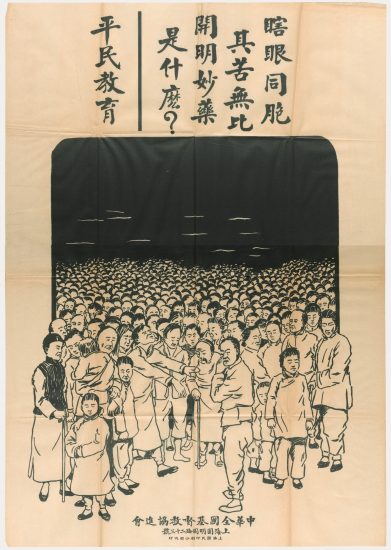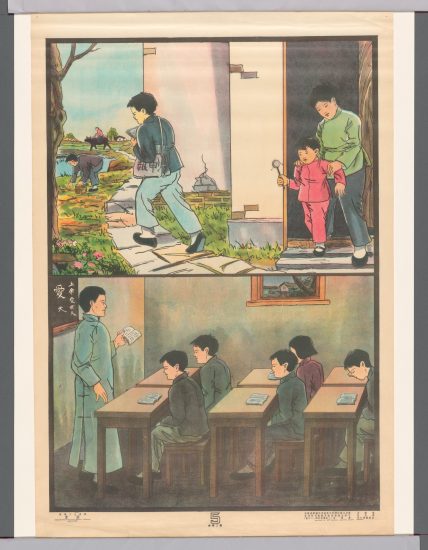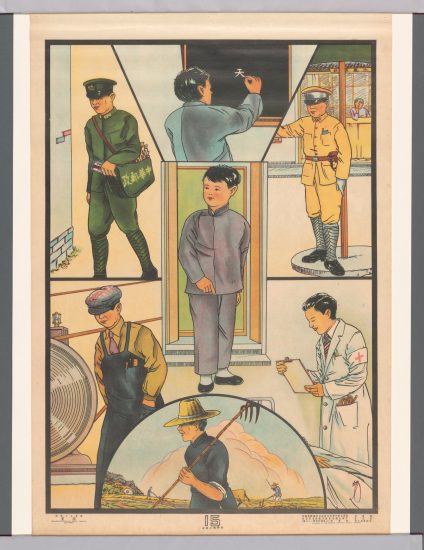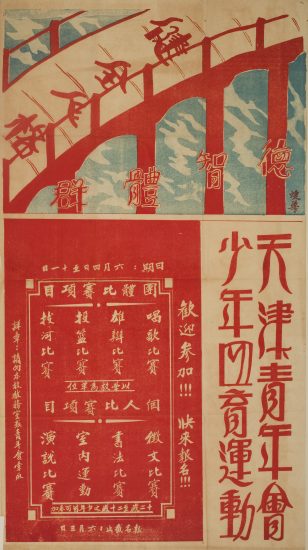
Commoner's Education!
This poster depicts a huge amount of common Chinese people suffering and waiting in a feudal era in the early 1900s. Its publisher the National Christian Council of China was founded in 1922. National Christian Council of China (NCCC) was an advisory organization for Protestant Christian groups in China (BLUTS). Through this poster, NCCC reflected the educational need of the vast majority of people at the time, and the positive impact it could have on the whole country. This poster illustrates the changes in education’s purpose in the turbulent early 1900s. It was yelling out people’s voices of aspirating for refreshing and making changes. This poster is fascinating, as it includes people of all ages, genders, and social classes. It reveals that education in that time was no longer aimed to train people into officers or only face a small portion of the Chinese population. It became a “commoner’s education” and a solution to offer more people the opportunity to change their lives.
Citation:
National Christian Council of China records, 1919-1950, series #, box #, folder #, The Burke Library at Union Theological Seminary, Columbia University in the City of New York. (BLUTS)

Dreams Are Coming True

Education & Society
This picture tells the consequences of promoting commoner’s education and the changes in social structures. This poster depicts various careers and a student. The person on the left top side of this poster was a mail carrier working for the Postoffice of the Republicans of China, Also, there is a teacher, a police officer, a machinist, a doctor, and a farmer. The author drew the student in the middle. Appealing to me, the identity of being a student was already connected to a broader range-to be ready to engage in society which included all the other careers. There was a potential purpose for the education of being equal and serving society. The publisher of both this poster and the previous one is the Christian Literature Society (广学会). It was founded by missionaries and provided Chinese education with new ideas and perspectives (Zhao, 2014).
Citation:
Zhao, Shaofeng. “广学会与晚清西史东渐.” 史学史研究 2 (2014).

